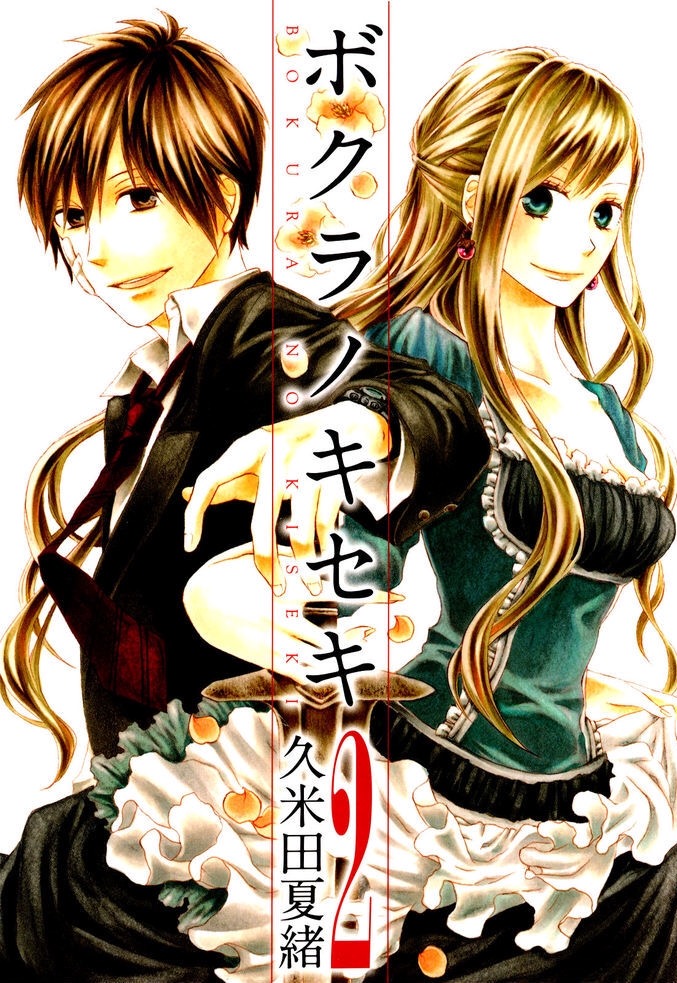Complexity of Bokura no Kiseki
This manga creates a intricate story that can be hard to follow. It uses magic and reincarnation, while melding it into a world much like ours. It’s easy to get lost in the characters and their past lives, while in turn you lose track of what is happening in the characters’ present.
Minami Harusmi has been able to remember his past life ever since being born in his current world. He had been reborn into his current world, while his past life was lived as a sheltered princess who was uneffected by social expectations. The idea of reincarnation came easy to him, since in his past life Minami had learned that those killed by magic will be reborn in a different life. What surprised him, however, was how no one else among his peers understood the concept of reincarnation and were unable to remember past lives. It led to people bullying Minami during elementary school for being different and declaring that he had been a princess that lived in a world of magic and castles.
When Minami is in high school, he meets a girl that asks him if he really believed himself to be a princess in his past life, and if he would be able to somehow prove it. This is how Minami discovers that magic does work in his current world, just at powerfully as it did in the last.
As the story progresses, we discover that Minami isn’t the only person who had been reincarnated into this day and age, though he was the only one who remembered for his entire life. As others of his classmates discover who they had been, sections among the class appear. The reason for the death of Minami in his past life was an attack on his castle, and the lack of protection from the church, who were acting as a neutral party.
The class separates into each of the three groups — church, attackers, and the castle — becoming distrustful to those in different sections, as well as among themselves. Minami is strategically hiding the fact that he was the princess in case the leader of the enemy group decides to continue their battle from the past. At the same time, Minami is doing his best to calm down the different sections and stop the fighting. Since everyone’s first memories were of the war, a time just before everyone’s violent deaths, knights were angry at their enemies and would attack when first discovering which person was on which side.
I have to say that the hardest part of reading this manga was identifying which character had which past. Every character looked like a normal high school student, making them hard to differentiate between in the first place. In addition, very few of the people resembled who they were in their past lives, where at times the hair color, age, or gender was different. Many of the characters would take on the personality of their past life and allow themselves to be consumed by the dominate personality, which can make understanding who matches with what past easier.
Besides that, the manga was hard to put down after starting. Bokura no Kiseki does a wonderful job mixing the plot and mystery of who the designated enemy is. At multiple points during the manga, Minami is accused of being the prince of their past lives and causes people to suspect him of betraying his people, as well as the princesses’. He is forced to hide his true past while acting as someone in charge, even while being attacked by a separate group who want everyone to remember their past. Every other chapter, there is a new reveal or hint at who is who, and what they’re doing. There’s people switching sides, and those still affected by their past. Many people have secrets important enough to change the perceived reality.
Within the formed groups, some of which contain people of the different sections secretly working together, students are almost entirely truthful with each other about their mistakes and their past lives. At one point, a priest openly questioned his loyalties in the past world, warning Minami that the church might have been fighting against the princess. When it’s within their chosen groups, the students try to be more understanding of other people’s pasts. Minami accepted what the priest said and continued to share information with him, despite which side he may have been in the past.
Given the complexity of the plot, Bokura no Kiseki did a wonderful job of helping people understand what was happening throughout both life times. There weren’t any parts with an overload of facts, nor did it contradict itself. There were many times a character would lie about who they were in order to protect themselves, but the author did their best to distinctly between characters using the character design and personality traits.
For most manga, it is easy for an author to get lost in the complexity of story lines, and end up creating mistakes that contrdict themselves without explination. In Bokura no Kiseki, any contradictions are purposeful for a later reveal, only adding to the complexity. Whenever the readers were becoming comfortable with the character roles or where the plot was heading, a giant shift occures. At times a character will remember something of the past that changes the perspective of everyone, and it sends others into a panic as they judge who is still part of which side.
There were times when we discovered that a character we thought to be alive didnt reincarnated, and the author would go in depth on their pasts, focusing on how they died. I became attached to their personalities as we learned their hardships and romances, only for the character to die by the end of the chapter. These deaths hit me harder than the main characters, because these ones weren’t reincarnated.
I loved this manga and it’s complexity, especially the idea of reincarnation. Because the author was able to do such a difficult subject so flawlessly, this manga deserves a 9/10.

Shabana is going on her second year with newspaper. The majority of her time is consumed by fantasy, which is why she's constantly covered in paint and...





